Business Recovery: Options For Insolvent Businesses
March 22, 2024
If your company is struggling financially, it helps to have a broad understanding of the different business recovery options that are potentially available.
But if your business needs urgent support, seek the support of experienced insolvency practitioners without delay.
The total number of company insolvencies in 2023 was 25,158, the highest number since the year 1993 and 14% higher than 2022, according to The Gazette.
There was a 44% increase in compulsory liquidations and a 67% rise in company voluntary arrangements (CVAs) from 2022. The number of creditors’ voluntary liquidations (CVLs) was the highest annual number since records began in 1960.
Of course, if you’re worried about your business becoming insolvent and there’s still some scope to cut significant costs without repercussions, that’s an option worth exploring first.
Try to identify any major non-essential costs that could improve your cash flow and help repay the debts.
For all of the potential options below, we recommend seeking professional advice before proceeding.
Alternative financing
Being unable to pay debts when they fall due is one of the three ways of knowing that your company is insolvent – the cash flow test.
Cash flow is always a crucial consideration when running a business. To help, there are several financing options, each with their own advantages and disadvantages – including invoice discounting or alternatively, factoring.
Invoice discounting can generate a faster cash inflow compared to waiting for customers’ settling of their unpaid invoices:
- You borrow based on your agreed sales agreements and pay a fee to the invoice discounting service provider
- Invoice discounting provides short-term loans with the invoice values used as security
Invoice factoring is similar, but you hand over responsibility for collecting the debt to a provider.
However, alternative financing has its risks. For example, if your customer enters liquidation and never pays their invoice, you’ll still owe the debt and fees to your invoice discounting provider.
For more details on how this process works, take a look at our full guide on invoice discounting.
Time to Pay (TTP)
The government introduced Time To Pay (TTP) arrangements in 2008 to help businesses better manage outstanding tax payments to HMRC, with an option to pay in instalments.
Under a TTP arrangement, liabilities tend to last for a period of 6-12 months, but there can be exceptions to increase this length.
The arrangement also shows HMRC that you are serious about paying back the tax you owe, making it less likely the government will consider taking legal action.
However, bear in mind that HMRC does not automatically accept TTP proposals and they are unlikely to reject one if they do not believe you will repay it successfully.
Post-approval, missing repayments can cause serious issues too. HMRC may seek legal action against your company if you fail to comply with the agreed plan.
In addition, TTP arrangements are one potential option if you can’t pay a Bounce Back Loan or Coronavirus Business Interruption Loan (CBILS) on time. For more information, here is our guide on what to do if you cannot pay off your Bounce Back Loan.
Administration
Another way of getting some extra time to assess your business recovery options when struggling financially is by appointing company administrators.
They review your business’ position to see if there is sufficient support to continue trading in the long-term. They will attempt to rescue the company.
If that’s not possible, they will try to achieve a better result for creditors compared to if the company enters into liquidation.
If administrators cannot see through a business rescue, they can distribute its assets to secured and preferential creditors, then to others if there is anything remaining.
Find out more about company administration here. Administrators may recommend one of the following formal insolvency options:
Company Voluntary Arrangement
During a Company Voluntary Arrangement (CVA), insolvency practitioners put together a formal repayment plan while the company continues to trade. This eases the pressure from creditors and can help the business avoid liquidation.
Creditors cannot recover interest or historical debts beyond the date of the CVA approval and outstanding debts after its conclusion can be written off.
- However, for the first 6-12 months of the CVA, new credit lines will be more difficult to secure
- Also note that Companies House and the business’ credit file will include a record of the CVA
And if the company cannot continue to repay the agreed contributions on time, the supervisor may need to place the company into compulsory liquidation.
Creditors’ Voluntary Liquidation
If the debts are unpayable and the cash flow is poor, a Creditors’ Voluntary Liquidation (CVL) might be the best choice for the business
This is a director-led process where a moratorium, which is a period halting legal obligations, stops creditors from approaching the company with their debt claims.
Company shareholders vote to approve the CVL process and afterwards, the business stops trading and sells off its assets.
So in short, what’s the difference between a CVL and CVA? They’re both voluntary, in that the company directors proactively appoint an insolvency practitioner, rather than a third party taking action against the business.
And in both procedures, the company directors’ duty is to the creditors of the company instead of the shareholders. They have some similarities but a CVA is much more likely to allow a struggling business to continue trading, if an agreement is possible.
Business Recovery: Options for insolvent businesses
Several of these processes require the assistance and guidance of a licensed insolvency practitioner.
An experienced insolvency practitioner will give you the expert advice you need to manage the process.
As mentioned earlier, it’s best to get in touch as soon as you notice signs of insolvency, for the best chance of business recovery.
It can be daunting to think about, we know. But it’s our goal to help you find the most efficient and fiscally sound solution for your business recovery and insolvency challenges.
Whether you need business recovery services or good financial advice, Hudson Weir is here to help – for more information, please don’t hesitate to contact us.













